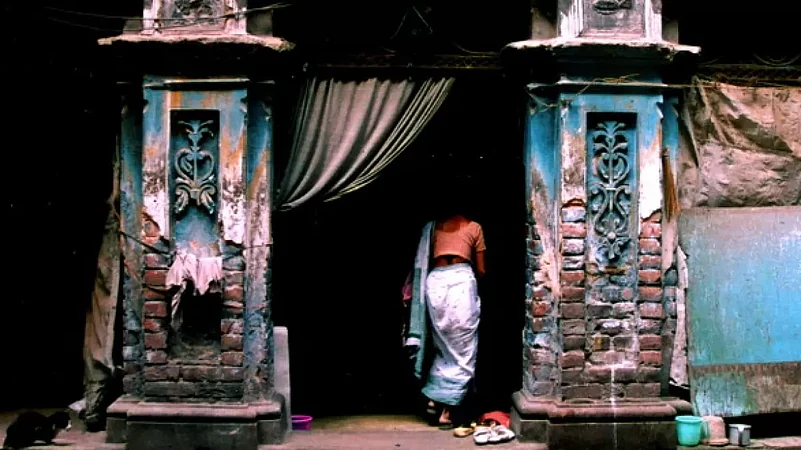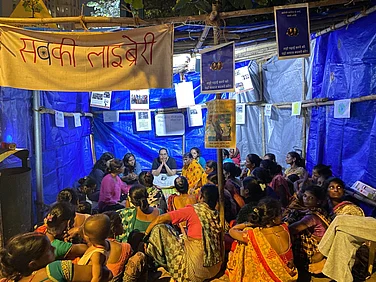It was my husband, erstwhile Bengali writer and documentary filmmaker Siddhartha Samaddar, who reintroduced my adult self to Trailokyanath. As my senior author, Siddhartha was keen to bring to my notice that, being a fantasy writer myself, I ought to read the work of my more illustrious predecessor in the same genre. He also shared with me folklore about Trailokyanath’s love for marijuana and chandu, citing their frequent mentions in his prose. Was substance part of Trailokyanath’s process? Was it at the core of his visions about what it meant to be a ghost and how to be one, which he went on to relate to the reader by means of fantastical tales of love, adventure and laughter that never failed to somehow galvanise?
Up until that point, which was in the early noughties, I, who wrote what I self-identified as speculative fiction, was familiar with Trailokyanath Mukhopadhyay or Mr T., as I liked to dub him mentally, exclusively as a Bengali satirist from the texts I had read and been marked on during my school days. And it would not be before 2011, when back from Kolkata’s storied Collegepara, Siddhartha would bring me my first copy of ‘Trailokyanath Rachanabali’ (‘Collected Works of Trailakyonath’), the first of which, ‘Kankabaty’, had been published in 1892. The name of the current publisher (2006) is Sri Shyamapada Sarkar, Nabin Chandra Pal Lane, Kolkata. There were at least three editions of the republished work until 2011, which happen to vouchsafe its extant popularity. The pages of this last volume are the space where I discovered, to my immense intrigue and wonderment, one of the world’s first magic realists, nay, authors of speculative fiction, Trailokyanath. With the weight of the 850-page omnibus of stories behind him, was it he then who invented this genre?
The form of original, and not derivative, fiction writing can be broadly divided into two genres: realist and speculative. Speculative fiction is characterised, uniquely so, by the building of imaginary worlds. Subgenres of speculative fiction include magic realism (‘Lullu’, ‘Kankabaty’), surrealism (‘Beerbala’), fantasy (‘Kankabaty’), fable (‘Shambhu Ghosh’s Baby Girl’), science (‘Domrucharit’), myth (‘A Japanese Folktale’) and supernatural (‘Every Cloud Has a Silver Lining; Behold the Honest Woman That Is Smiling’); the last literary style referring, in plainer terms, to the good old Bengali tradition of the ghost story.
As illustrated by the examples of his works above, cited genre-wise within each pair of parentheses, with the exception of possibly hard science—because his science-fantasy hybrid leaned strongly towards fabulism—Trailokyanath’s oeuvre cuts across all these subgenres. The thrilling aspect of this is, while the actual definitions of many of these genres and subgenres (magical realism, speculative fiction, and so on) would be coined only decades later in English literature, our man was already creating these genres and bending them in Bengali, in 19th-century United Bengal! When I came to discern it, it was a revelation. It inspired me in 2015 to write an essay titled ‘Rereading Trailokyanath’, in Contrarywise, my Times Of India blog, positing these facts.
It was not before many more years had gone by, however, that I would be pleasantly surprised and vindicated to find my theory echoed by scholar Boddhisattva Chattopadhyay (University of Oslo) in an essay and read another piece by him in an old favourite ezine, the highly reputed Strange Horizons, that argued for a non-Anglocentric vision of the world of speculative fiction.
It is no one’s postulate, however, that Trailokyanath completely stayed away from straight-up realist narrative fiction. His novel, ‘Fokla Digambar’ (Gumsy Digambar), for example, is a love story but also a ‘serious’ comedy of manners. ‘Paaper Porinaam’ (Sin and Consequence) is a social drama and short story ‘Lalit O Labanya’ (‘Lalit and Labanya’) an intimate study of hardship in the Bengali countryside. Even the ghosts that pepper Trailokyanath’s writing are of two kinds — metaphorical and metaphysical. The metaphysical ghosts are spirits of dead men, women, and children. They edit newspapers (in ‘Lullu’) and have magical powers (also in ‘Lullu’). They haunt the houses of humans in Kolkata (‘Chinese Spooks on Pous Sankranti’), a city which appears as a character in this and some of his other works (like ‘Kankabaty’, ‘One-Shanked Chhoku’, ‘The Mysterious Ring’ and ‘When Vidyadhari Lost Her Appetite’). This is even as a majority of his pieces are set in the northern (‘Kankabaty’), eastern (‘Nidhiram Bengali’, ‘Gumsy Digambar’), western (‘Shambhu Ghosh’s Baby Girl’), and southern (‘The Invaluable Tobacco and the Learned Snakes’) Bengali countryside. The metaphorical ghosts of Trailokyanath appear in ‘Lullu’ and ‘Domrucharit’ as subaltern characters living a marginal existence on the fringes of genteel Bengali society. They look and act like the wraiths that they are. Wraithlike, too, they fall in the ambit of the curious rules of ghostship that govern the ghostly lives of ‘real’ ghosts.
My egalitarian (and personally speaking, feminist) reading of his works has made it incumbent upon me to use the singular they as the third-person generic pronoun for many of Trailokyanath’s characters as well as for the Great Unknown, personified by him as God. In its 14th edition (1993) of The Chicago Manual of Style, the University of Chicago Press explicitly recommends using the singular they and their, noting a ‘revival’ of this usage and citing ‘its venerable use by such writers as Addison, Austen, Chesterfield, Fielding, Ruskin, Scott, and Shakespeare’. By 2020, most style guides have accepted the singular they as a personal pronoun.
The style of Trailokyanath's prose is weighty and formal while its tone is wry and irreverent. Hence, I have consciously adopted a Victorian style while rendering it in English and, at the same time, tried to be as exact as I can so as to not miss the many cultural facts peppering it, which is another attraction of his works, as well as efficaciously capture the subtleties of his humour.
Why is reading Trailokyanath still important in today’s climes and times? Here are five reasons.
Trailokyanath was a classical liberal thinker. His works show what it is to be a civil servant (a bilingual, well-travelled rationalist) as well as a socially invested libertarian in British India. He inhabited a unique, non-activist yet extremely clear-eyed, perspective. It lends a certain fineness to his works that makes them aesthetically timeless.
Trailokyanath is relatively unsung and underrated because his legacy fell on the wrong side of the post-Independence political establishment. But as a short story writer, his talent considerably exceeds that of even Rabindranath Tagore (whose aesthetic has become old-fashioned but whose sensibilities as expressed in the short story form still have the power to appeal and provoke thought) or Saratchandra Chattopadhyay. It is both a joy and comfort to read Trailokyanath’s stories a century and more after they were written. Perhaps due to professional rivalry, Tagore is known to have played him down as a children’s writer.
At a time when the rest of India was rooted in mind-numbing dogma that stank of soul-killing illiberalism, irrationality, and inhumanity, Trailokyanath wrote magic realism, speculative fiction, and science fiction, and was among the first in the world to write, masterfully, in these genres. It can be said that in India it was he who invented these genres.
Trailokyanath is also unique in that he, himself, was a 19th-century bilingual writer. His first works were travelogues in English. He was well-travelled and toured all of Europe as a curator for the world-famous Indian Museum, Kolkata.
We need more authentic Bengali icons in the mainstream, going beyond political certitudes and clichés. Fortunately, we have little dearth of them in our history. But we need to spread the word before their legacy is diluted, or worse, erased and overwritten.
The author passed away in 1919 and the work is not copyrighted. The challenge for me, therefore, was to be accurate in my translation so that I could communicate as much of the Bengali idiom and history of the language to the reader while preserving the thrust of the dialogue and the thought process of the author. I fully intend my work to be the ‘same text in a different language’ and not a transcreation. It is for this reason that I have included a glossary at the end of each of the works to elucidate upon the idioms, customs, sayings and indigenous terminology used by the author.
Still, the process of translation involves the subjective exercise of preference and discretion. It also leads to the refinement of one’s own understanding of people and their worldview. Better to say I am Bengali, rather than I am a Bengali, my father had once said when I was in school, preferring the adjective to the noun, as I bullishly cross-questioned the mickey out of the nuance. But is it wrong to say the latter? It is not incorrect, he had conceded, in one of his first exact and hence less absolute responses, which I failed to fully receive as a schoolchild.
I had completed over 200 pages of initial translations when I encountered, in ‘A Japanese Folktale’, the first of my political differences with Trailokyanath. Therein, he advances, diffidently but without the benefit of evidence, the possibility of ancient seafaring Hindus from Bengal having reached Japan, thus betraying the teeniest sentiment of Bengali exceptionalism that was not inappropriate in his time. In the same story, he is also vociferous about the ills of saké, the Japanese national drink. Perhaps, he had retained, notwithstanding his reputed affinity for chandu, a brahminical abhorrence of liquor. Hindus and Rastafarians are known to keep their senses virgin by avoiding all forms of intoxicants, including the theine (found in tea), with the sole exception of tetrahydrocannabinol. If as a personal habit, it is an unassailable choice.
Glib and convenient virtue-signalling by taking a high moral ground just because it is now easy to do so is a bane of our own times. Minds far greater than their combined self have been brought down to the dust by the cancel culture brigade using ideas gatekeeping and social media amplifications. Indeed, one can wonder, legitimately so, if those who persecuted the Renaissance men and women from the Right are now doing the same from the Global Left by deleting them from syllabi. But quick and dirty judgements in order to signal virtue is not the same as thinking and exercising one’s judgement while doing a close reading of the works of an author.
As I have disclosed before, this translation is a feminist reading of Trailokyanath. Female readers are particularly sensitive to how women are portrayed in literature, directly impacted as they are by the world history of misogyny. As such, Trailokyanath does a superlative job in capturing the inner child of women. Indeed, it is so good that identification is spontaneous.
That said, my own concept of womanhood is incongruent with Trailokyanath’s. This, I learnt, however, only when I came up against his descriptor of tthunto (cripple) for the ‘overeducated’ bhadramohila (well-born woman) who reads novels and gets het up over talking points and lies in bed in a blue funk, neglecting housework and lacking in gravitas. Such a characterisation of the turn-of-the-century Renaissance Woman appears twice in his body of work, once in the story ‘The Mysterious Ring’ and the second time in Gumsy Digambar. For me, those are his only lines that rankle. Clearly, Mr T. does not have a public role for women in mind. They are, to him, only servants of the men as muse and helpmeet. In any other setting, they are rendered as crippled and pointless creatures.
(Excerpted with permission from Trailokyanath Mukhopadhyay: Tales of Early Magic Realism in Bengali published by Niyogi Books and translated by Sucheta Dasgupta)





















